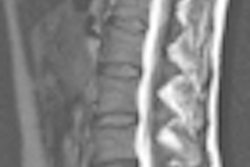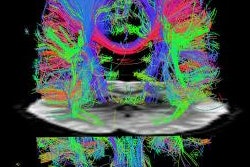Breast ultrasound elastography is 12% more sensitive than MR diffusion-weighted imaging (DWI) in determining malignancy of breast masses assessed as BI-RADS category 4, and it's almost 10% more accurate, according to a new study published in the January American Journal of Roentgenology.
Clinicians currently use B-mode sonography and dynamic contrast-enhanced MRI to classify breast lesions based on the standard BI-RADS categorizations. But newer techniques such as ultrasound elastography -- which assesses the softness or stiffness of breast tissue -- and DWI-MRI are being evaluated as adjuncts to these modalities in the hope of better identifying the character of a breast lesion.
Hiroko Satake, MD, of Nagoya University School of Medicine in Japan, and colleagues compared the abilities of ultrasound elastography and DWI-MRI to predict malignancy of breast masses. They found that not only was elastography more sensitive overall, it was more sensitive with lesions smaller than 1 cm -- more than 17% compared to DWI-MRI. In addition, it was more than 10% more accurate (AJR, January 2011, Vol. 196:1, pp. 202-209).
"Because malignant tumors predominantly are harder than benign tissues, [ultrasound elastography] significantly improves the differentiation between benign and malignant tissue," Satake and colleagues wrote. "[Our results] suggest that ultrasound elastography could be used to prevent unnecessary biopsies."
Satake's group included 115 breast masses categorized as BI-RADS 4 or 5; the masses were assessed according to combined findings from mammography, B-mode sonography, and dynamic contrast-enhanced MRI. Two radiologists retrospectively evaluated the elasticity scores of the masses using ultrasound elastography and the apparent diffusion coefficient (ADC) values using DWI-MRI.
Of the 115 breast masses included in the study, 88 were malignant and 27 were benign. The mean diameter of the malignant lesions was 16.1 mm, the team found. The researchers compared BI-RADS assessment categories, elasticity scores, and ADC values between the benign and malignant masses. A lesion's elasticity score proved to be more sensitive and accurate in predicting malignancy than its ADC value, both overall and with lesions smaller than 1 cm.
Accuracy of elastography versus DWI-MRI
|
In fact, when the team analyzed the 52 breast masses in the cohort that had been assessed as BI-RADS category 4, lesion elasticity score was a statistically significant predictor of malignancy (p = 0.002), while ADC value was not (p = 0.054).
"By accurately identifying benign tumors with imaging, we may be able to avoid sending patients for unnecessary biopsies," Satake and colleagues wrote. "Based on the results of our study, we recommend that patients with BI-RADS 4 masses should undergo biopsy if their ultrasound elasticity score is 4 or 5."
By Kate Madden Yee
AuntMinnie.com staff writer
January 11, 2011
Related Reading
Sonoelastography predicts whether breast DCIS is invasive, December 13, 2010
New elastography technique helps characterize breast lesions, June 16, 2010
Breast elastography gets high sensitivity marks in 7-year study, November 11, 2009
Elastography shines in assessing breast lesions, April 29, 2009
Ultrasound elastography shows potential in thyroid nodules, February 11, 2009
Copyright © 2011 AuntMinnie.com



.fFmgij6Hin.png?auto=compress%2Cformat&fit=crop&h=100&q=70&w=100)





.fFmgij6Hin.png?auto=compress%2Cformat&fit=crop&h=167&q=70&w=250)











